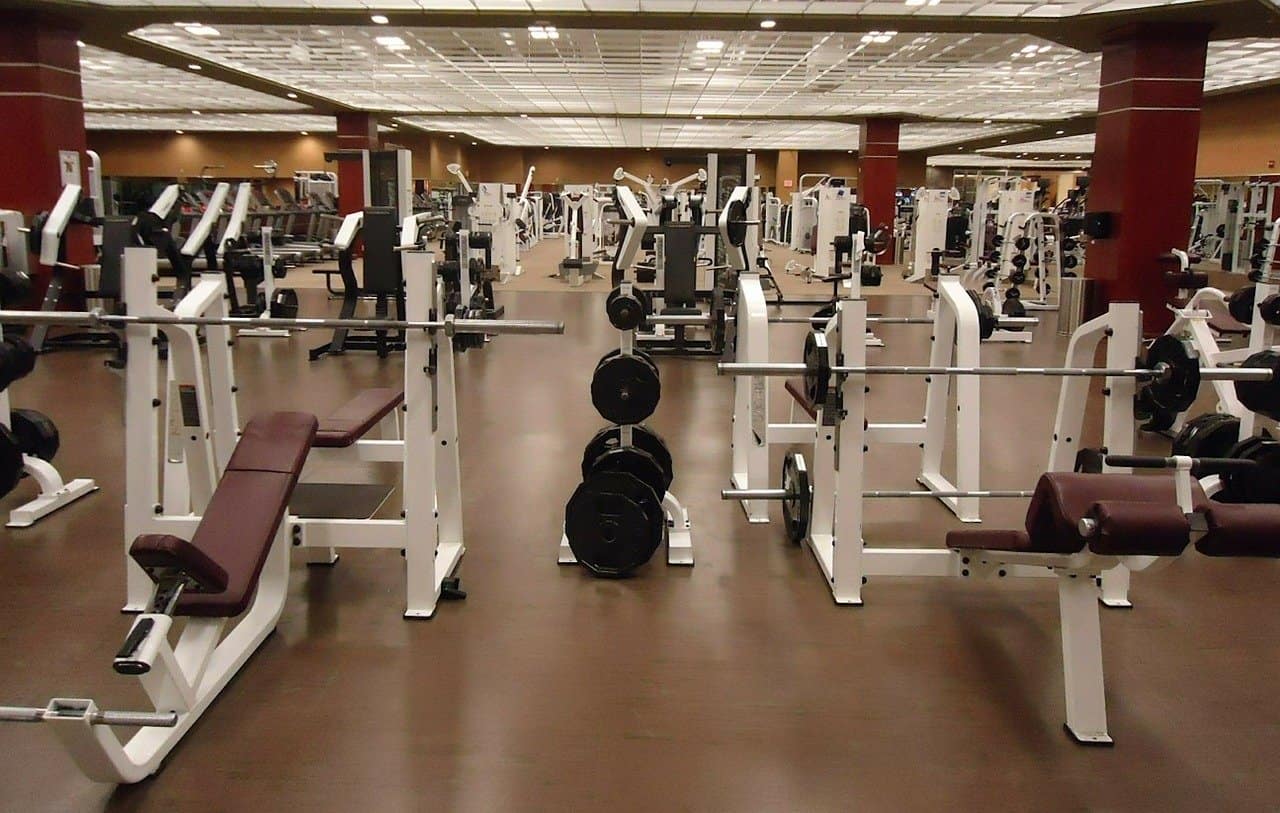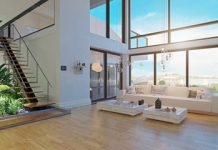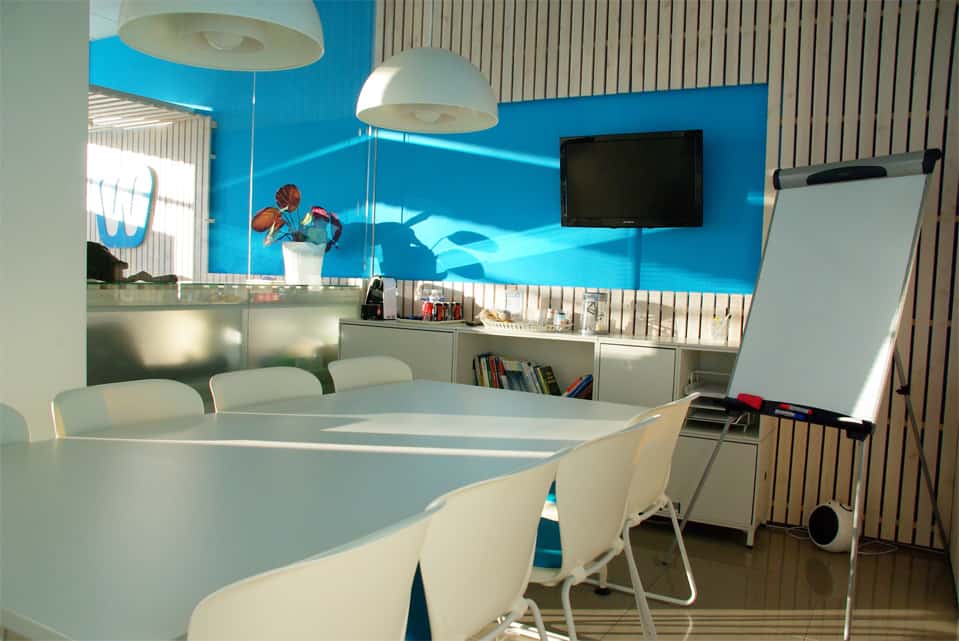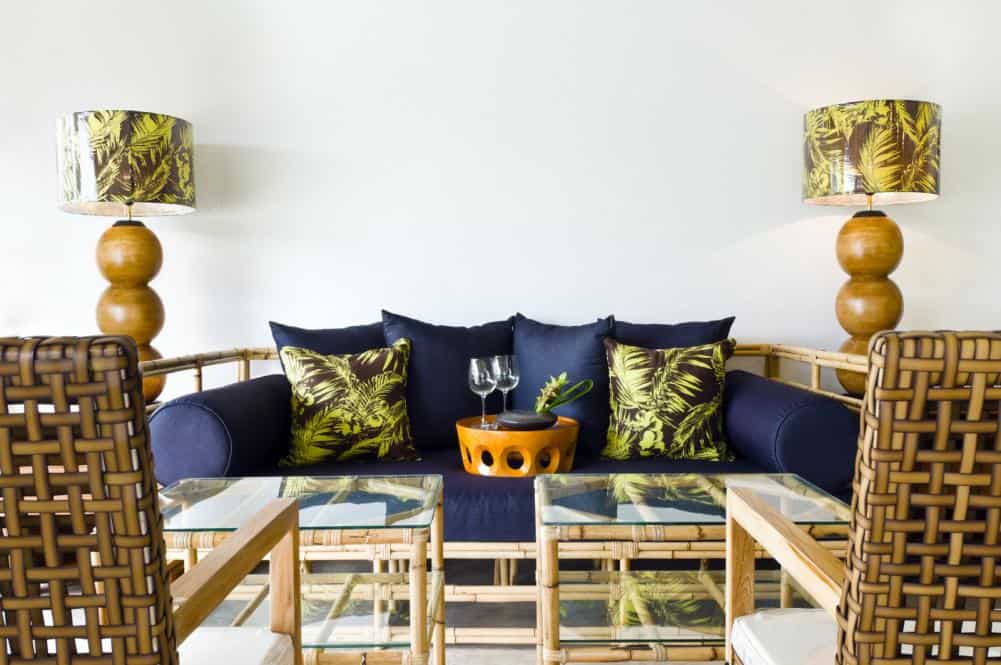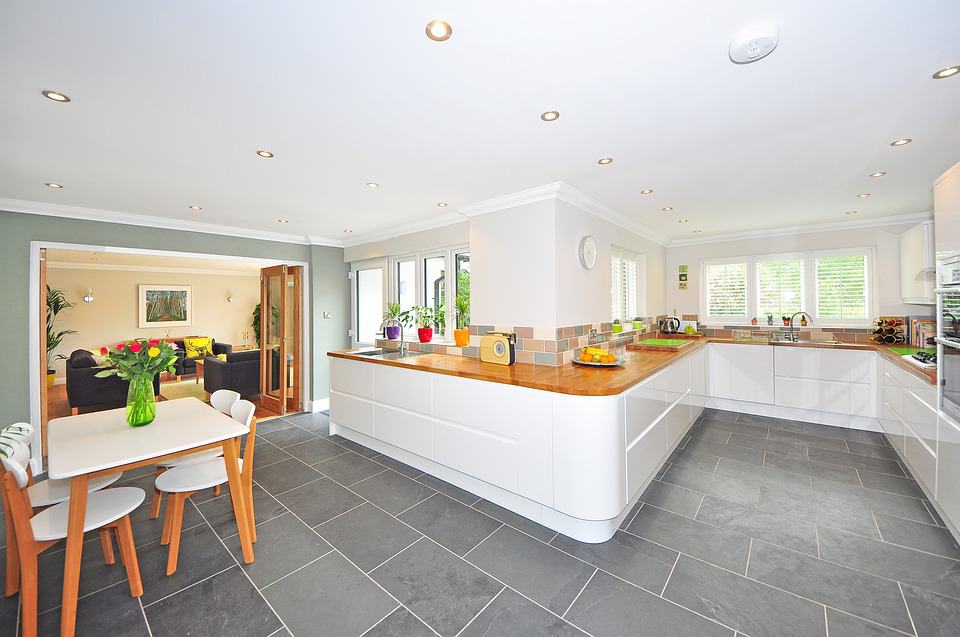The gym is an area dedicated to people enthusiastic about exercising and de-stressing themselves. People today are much more aware of the impact environment, and lifestyle choices have towards our disposition. This awareness has led to a surge in demand for fitness facilities sought by commercial gyms and residential areas alike. Corporate offices 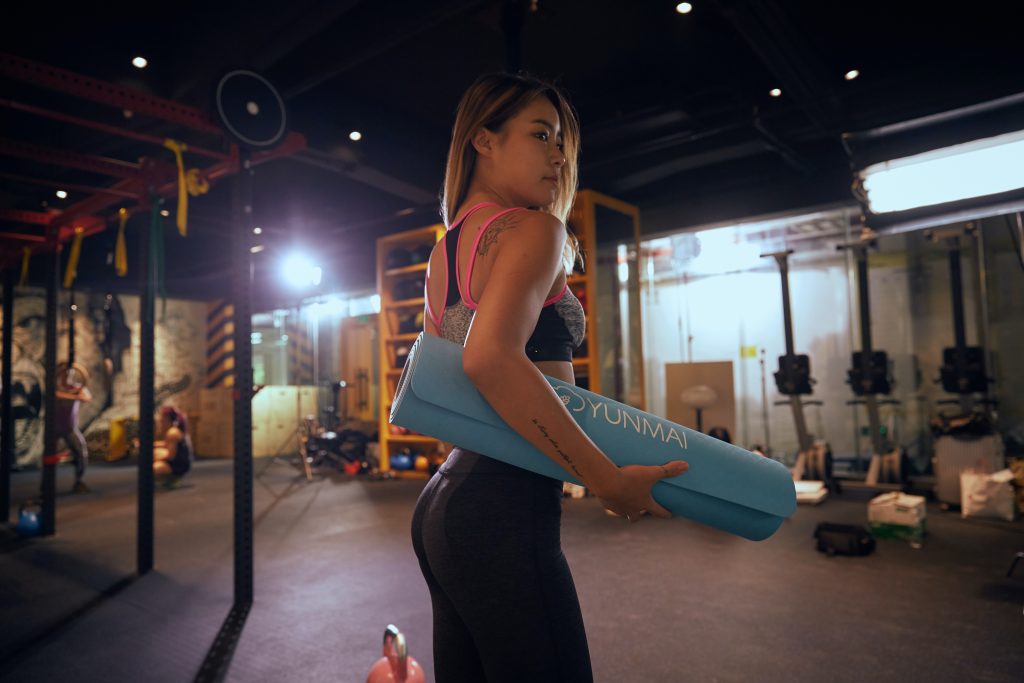 too, have begun incorporating fitness areas as companies try to meet the needs of their employees and are for their overall well-being. Some hotels and resorts have started curating in-house training hubs with distinctive wellness retreats to attract fitness-focused travellers. At the core of designing the interiors of a gym is figuring out the basic concept. Our goal is to develop a gym design that provides a conducive environment for all its members to rejuvenate themselves.
too, have begun incorporating fitness areas as companies try to meet the needs of their employees and are for their overall well-being. Some hotels and resorts have started curating in-house training hubs with distinctive wellness retreats to attract fitness-focused travellers. At the core of designing the interiors of a gym is figuring out the basic concept. Our goal is to develop a gym design that provides a conducive environment for all its members to rejuvenate themselves.
A gym interior designer ensures that a fitness centre is not only conducive but also an area that motivates you to visit it often. This is where aesthetics matter. The gym needs to be maintained attractively to earn new clients and retain existing clientele. Designing a gym requires you to incorporate different aspects and elements to transform it into a full-fledged health facility. This also includes optimal placement of equipment for efficient utilisation of space. 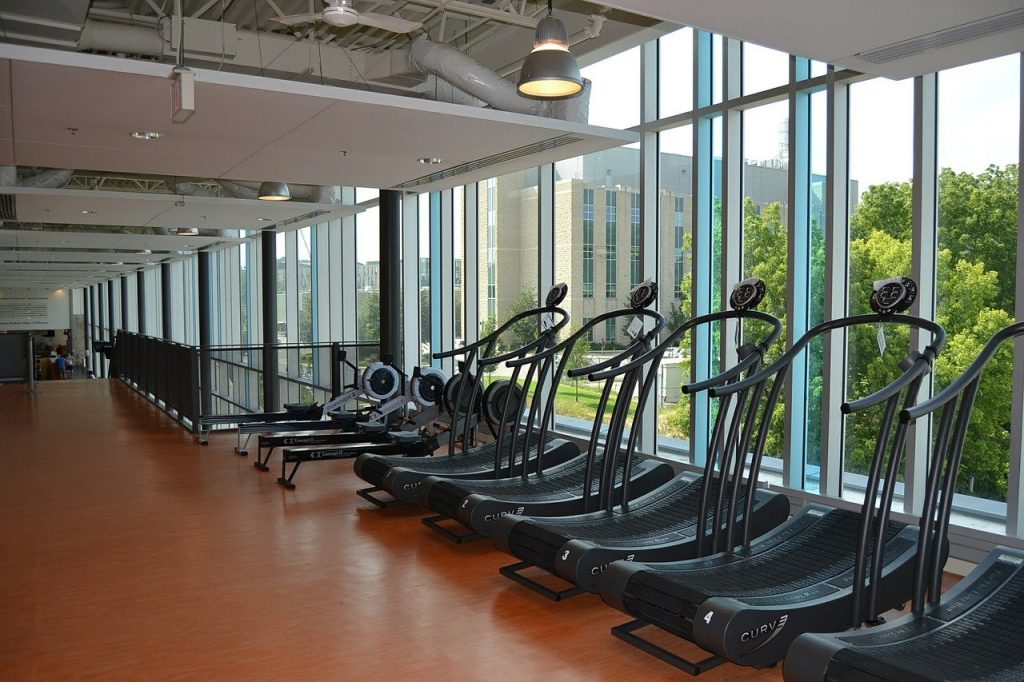
An intelligent combination of colour and biophilic design will be vital in maximising the gym experience of the members. With the help of innovative materials and lighting mixed with an efficient floor layout, this post will walk you through all the important elements of a gym interior design.
Floor Plan and Space Layout
A successful gym is one that has paid attention to the manner in which each zone is placed. Spatial arrangement is essential to suit the unique needs of its users relative to that space. Hence, the design scheme should be tailored to provide them with an environment that’s not only functional but also safe and comfortable. For instance, a cluttered and small interior space will make people uncomfortable while training. This does not imply that a large facility is required to provide an enjoyable fitness experience. Instead, a small space can also be used to facilitate numerous workouts and adequate equipment. Creating a comfortable sphere, even out of a small space, can only be achieved through good space planning.
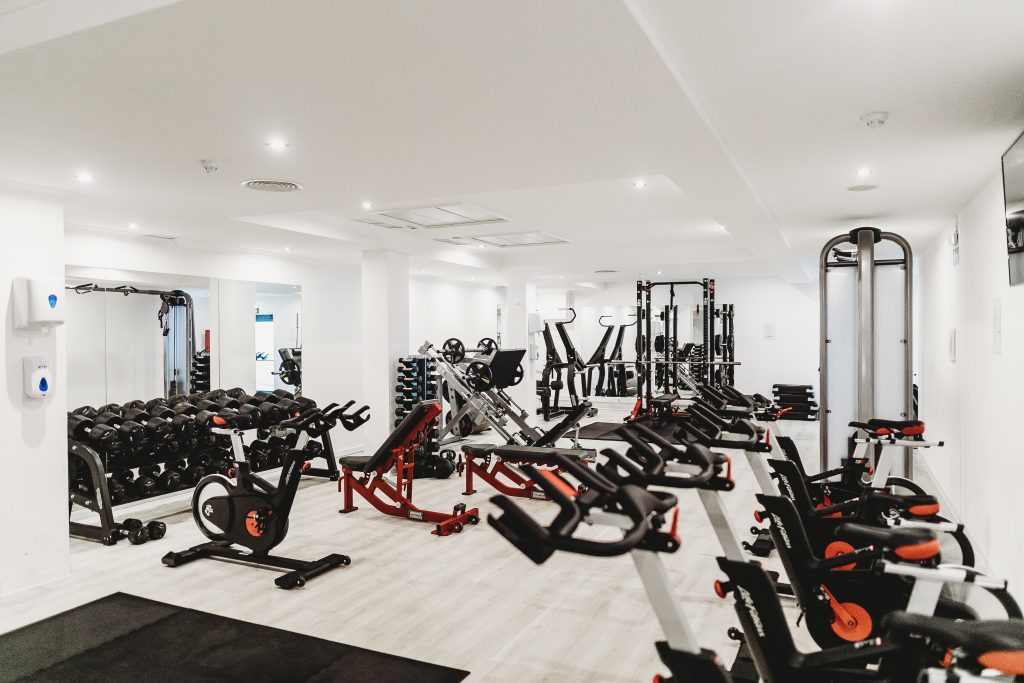
A gym can boost its appeal towards its targeted clients by incorporating focussed zones in its design. An overall layout plan that is pleasant and non-intimidating is always preferable. To avoid that ‘boxed-in’ feeling, high ceilings will help provide ample circulation of air. The switch between dense and open areas should be subtle to allow greater flexibility in an indoor environment.
Colour Choices
Fitness centres today are more than plain concrete-walled rooms for heavy equipment. It is an accepted fact that colours have a significant effect on our psychology and our moods. Fresh and energising hues are perfect for motivating high adrenaline while subtle tones imbibe a sense of calmness and tranquillity befitting holistic workouts. Wellness centres offering specific zones for mind-body development, like Yoga, can create a relaxing and soothing atmosphere by using a lighter hue for the allotted area. The overall appeal of the 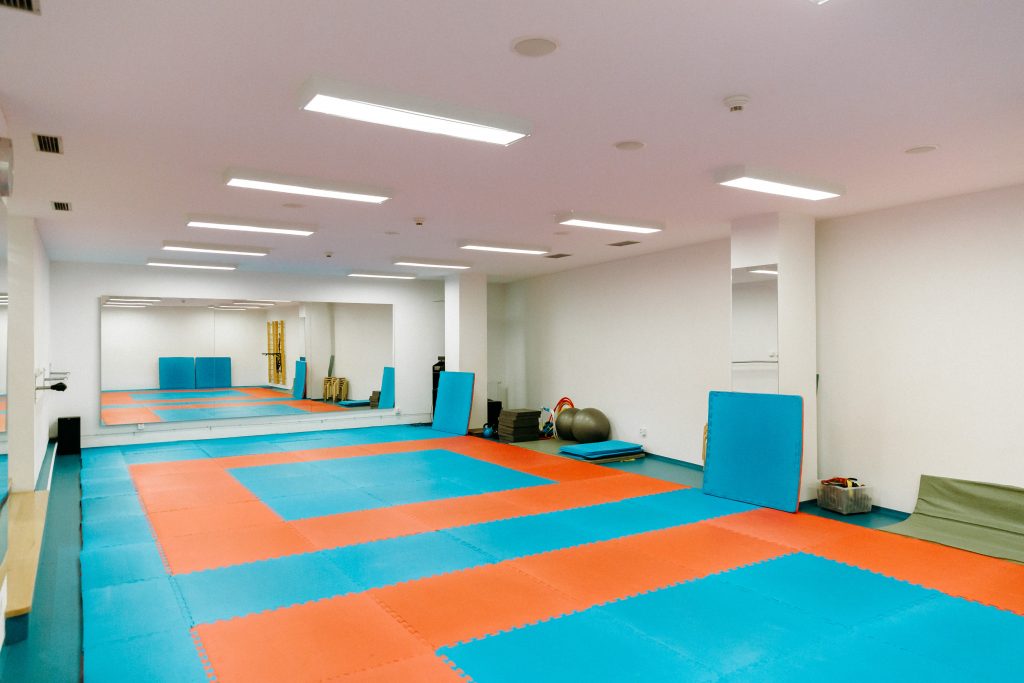 gym is enhanced by choosing the right colour scheme.
gym is enhanced by choosing the right colour scheme.
Vibrant Colours
Red and orange are colours that invoke passion. They are eye-catching, which can visually induce high-energy within clients tower through intense workouts. Cardio zones can be enhanced with brighter hues depending on the purpose to be served. A splash of red helps increase heart rate, orange serves to stimulate thoughts, and yellow brings out cheerfulness and enthusiasm.
Cool Colours
Some areas of the gym are required for relaxing and rejuvenating as well. Blue and green shades work particularly well to provide that cooling effect. Such hues trick the mind by invoking a sense of coolness that is much required in a place where workouts can lead to 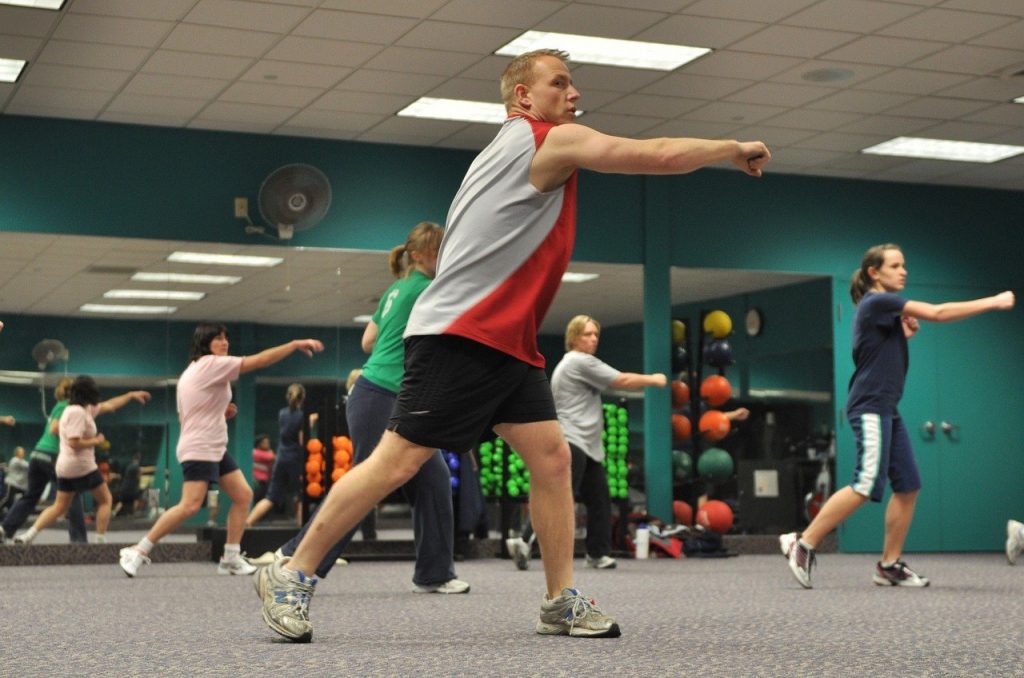 overheating. They also evoke the feeling of success which can motivate members to attain more robust fitness goals.
overheating. They also evoke the feeling of success which can motivate members to attain more robust fitness goals.
Simple Colours
Off-white and beige are the ever simple and sober colours that can be trusted to brighten any space. Neutral shades are essential to yoga and meditation zones to create a pleasant and calm atmosphere. Since they are less distracting, they aid the focus required for workouts. Also, these soothing neutral hues open up the space visually and make it seem airy.
Decor Choices
Gym interiors don’t require massive decor items, but even adding beautiful floor tiles that complement the wall paint can add aesthetic value. The gym needs to be attractive, along with being functional to prove the worth of your gym interior design. An excellent way to add beauty with style is by decorating the gym with murals and pictures. Make the place seem more alive by placing large size mirrors and adding plants for that extra splash of green. Add a surround sound high-quality music system with large television screens to provide an all-round enjoyable experience.
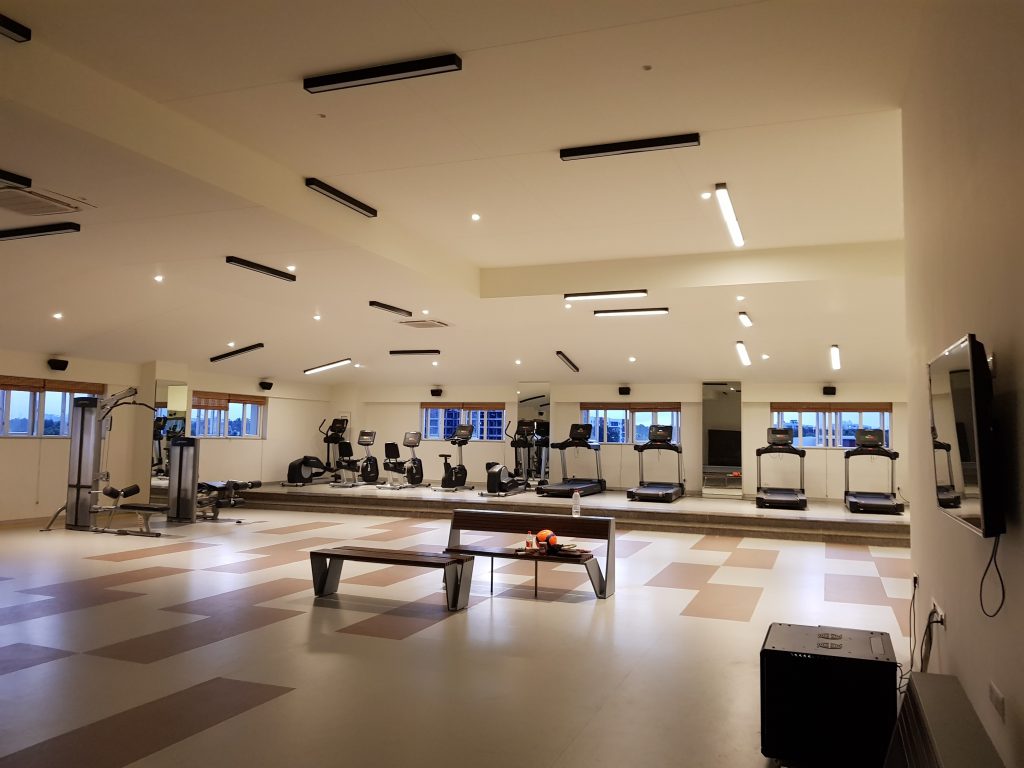
Flooring Options
A wide range of flooring solutions is available for gyms today. From textures to functionality, be it rubber floor tiles or hardwood flooring, one is spoiled for choice. The key is finding one that suits the different areas of the gym and its equipment while providing strength and durability.
Theme-Based Designs
The best way to make your health facility stand out from the rest is by giving it a theme. Giving it distinct and unique qualities to suit a theme will make your clients’ exercise regimen fun and relaxing. For instance, introducing biophilia into the indoor environment 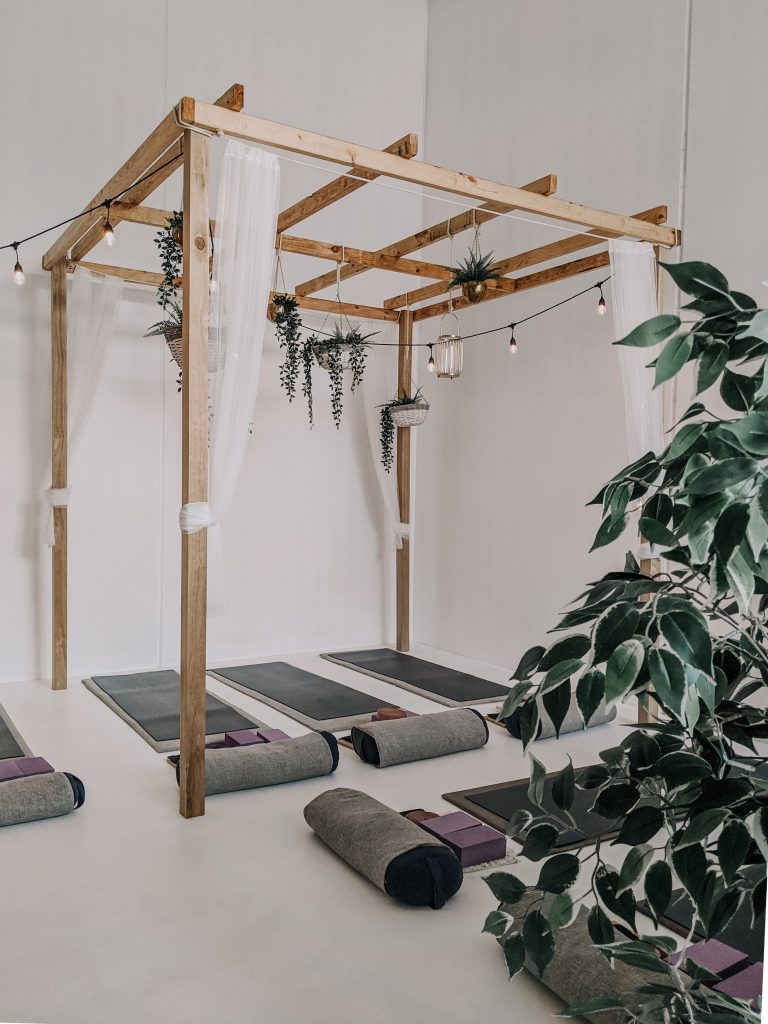 will allow you to channelise the best of mother nature. This concept primarily harnesses the refreshing and energising properties that we find in nature to improve the quality of the environment found indoors. Fitness studios and yoga rooms often use such a concept to promote the goal of overall well-being.
will allow you to channelise the best of mother nature. This concept primarily harnesses the refreshing and energising properties that we find in nature to improve the quality of the environment found indoors. Fitness studios and yoga rooms often use such a concept to promote the goal of overall well-being.
Apart from greenery, introducing organic shapes found in nature’s patterns or using natural materials (like wood or stone) into the gym’s concept early on sets the stage for a robust interior design. You can integrate the remaining elements of the great outdoors by providing more natural light and using soothing earthy tones. Using concepts to influence physical health and emotional state is definite to create a successful gym interior design.
Right Lighting
Picking the right lighting will be the necessary finishing touch to the entire gm concept. Lighting affects ambience, which is key to amplifying the design and brand aesthetic. The goal here is to make the interior as inviting as possible, so the lighting fixtures should be bright and radiant. Natural light does not only make the space aesthetically pleasing but also ensures a “feel good” vibe. It keeps the gym sunny and bright. If the location does not allow for adequate natural light, it is imperative to invest in lighting that recreates that same rejuvenating feeling.
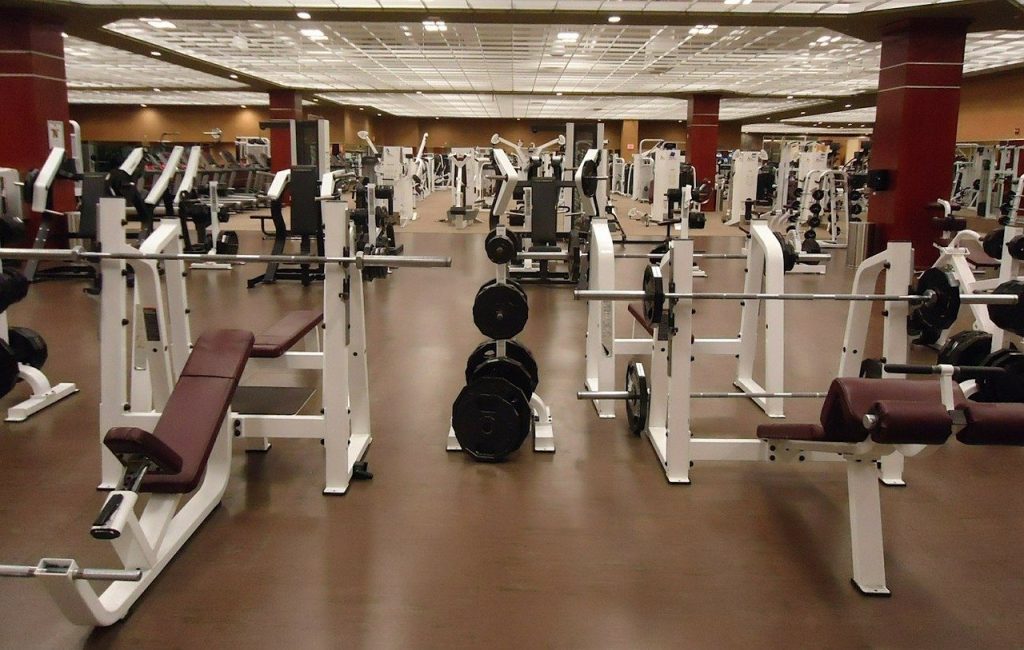
Good Gym Design Creates a Good Ambience
A professional interior design is one that ensures all the zones of the gym is compatible with the end-user. The look and feel of the space should be one that makes patrons linger for at least half an hour post a fitness session. From ensuring efficient usage of space to lighting to colour schemes, each component of this wellness-driven design is strategised to maximise user-satisfaction, which will ultimately lead to long-term retention. The overall atmosphere created should evoke relaxation and groundedness, along with good health. So make sure to integrate every design in the interior layout to transform any indoor environment into an all-inclusive haven for fitness and well-being.

